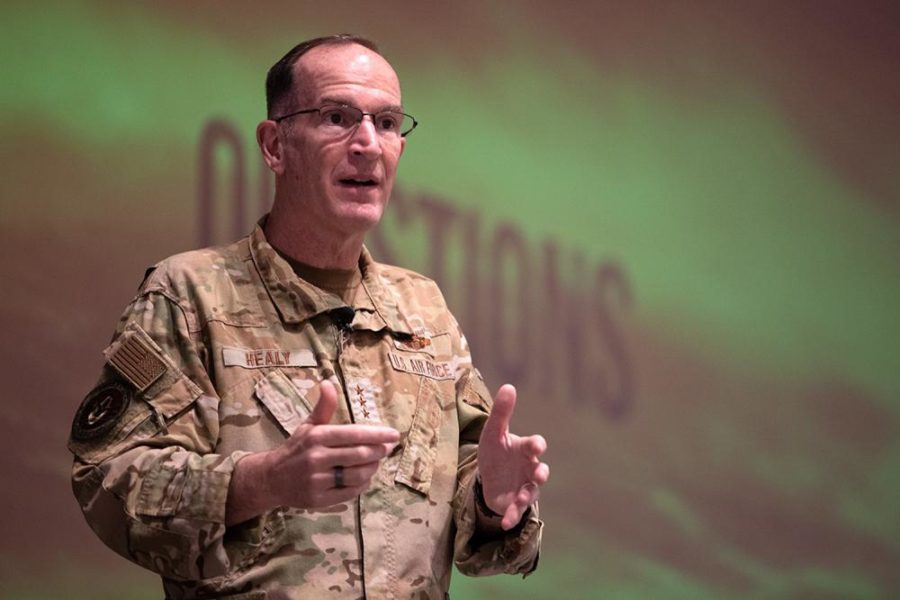The head of the Air Force Reserve wants to slice the amount of time it takes Airmen to transfer from Active-duty to the Reserve, from as much as six months now to just one. Lt. Gen. John Healy, Chief of Air Force Reserve, said speeding the transition is a top priority.
“Nothing makes a bigger first impression than when you’re in-processing into any type of new job,” Healy said March 6 at the AFA Warfare Symposium. “If it is nothing but a headache to get into that job, you’re starting on the wrong foot.”
To reach his goal, Healy is working with the Air Force Recruiting Service to identify the restrictions and barriers that slow down transfers. One ready example: A 33- or 34-year-old master sergeant who wants to switch is required to complete an accession physical examination and all the medical checks it entails, even if Active Duty records show the Airmen is physically and medically fit.
“We were shooting ourselves in the foot,” Healy said.
That policy is now fixed, but not all changes are so simple. Healy doesn’t have the power to change everything, and has to look to the other commands or even Congress in some cases for help. A new task force is now identifying “quick wins” that Healy’s Reserve Command can execute to accelerate Airmen’s move into the Reserve.
Air Force Reserve recruiting fell short in the last fiscal year by 1,500 recruits, or 2.1 percent short of its recruiting goal. With all the services and components struggling to hit recruiting targets, the Guard and Reserve face downstream impacts because if the active components increase retention incentives to make up for recruiting shortfalls, the reserve components see fewer transfer applicants.
The ripple effects from the COVID-19 pandemic has also hurt.
“In the past our recruiting models were based on 70 percent of recruits coming from the Active component and 30 percent representing non-prior-service individuals,” said Air Force Reserve Command Chief Master Sgt. Timothy White Jr. last year. “Right now we’re not achieving that 70-30 mix. In fact, we’re probably at 60-40 and in some cases 50-50, depending on the military occupational specialty. That means we have to adjust our budgets for schools and training to qualify non-prior-service individuals to serve. We’ve never had to do that in the past.”
Ideally, Airmen transfer to the Reserve from active-duty because they are already fully-trained, said Healy. That is why the general wants to make it as easy as possible for Active-duty Airmen to come over.
One possible change Healy is working on would allow Active-duty pilots who want to serve long-term to spend some of their Active-duty service commitment working full-time in the Reserve. The appeal is that reservists are not typically required to move.
New Air Force pilots have a 10-year Active-duty service requirement, at the end of which they can extend their service, leave, or transfer to the Guard or Reserve. Healy thinks if some pilots transfer to the Reserve earlier, they might be more inclined to continue, thereby giving the Air Force “a longer return on investment” for their training, he said.
“Those discussions are starting to bubble up, so now it’s ‘how can we get them fleshed out so we can see the intricacies of ensuring the individual continues their service,’” Healy said. Financial and other models must still be built to fully understand the impact of such a policy change.
Pilots and maintainers are the key skill sets that worry Healy. About 77% of the reserves fleet is older, legacy aircraft, and they require substantial maintenance.
“We’re always looking for maintainers,” he said. “We always need qualified, technically-minded folks who can work on those aircraft.”
